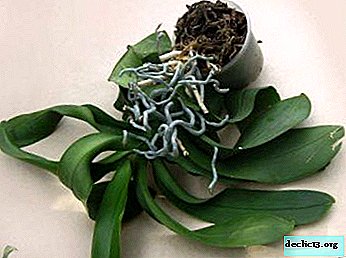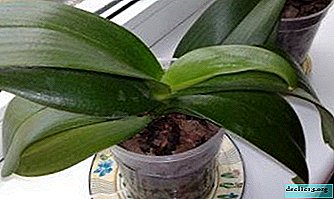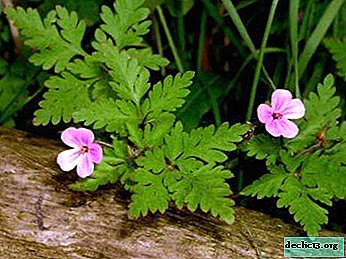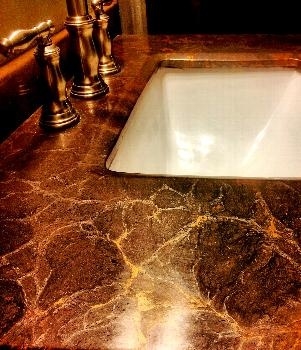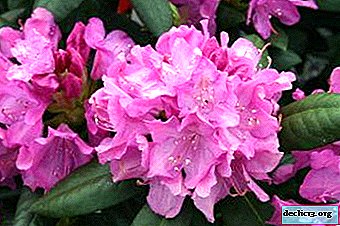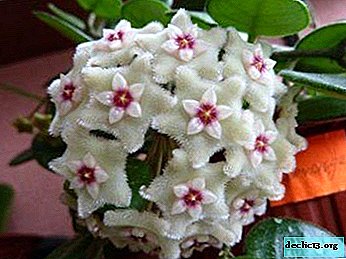Unpretentious cactus without thorns Rhipsalis (Rhipsalis): photo, description and cultivation at home
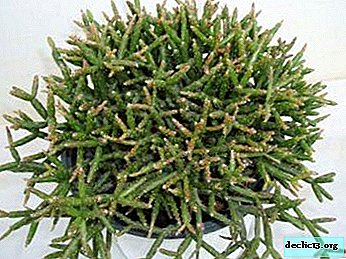 Ripsalis is an unpretentious plant, it does not need complicated care and perfectly survives at home.
Ripsalis is an unpretentious plant, it does not need complicated care and perfectly survives at home.
The plant looks very peculiar. Belonging to the Cactus family, Ripsalis is not like them. He has no thorns at all.
Designers often use flowerpots and hanging pots with Ripsalisy to decorate the interior, verandas and balconies.
These plants are one of the most ancient that botanists studied and began to grow as houseplants.
What is it - a botanical description
Ripsalis (lat. Rhipsalis) belongs to the genus Ripsalis and the Cactus family. The genus Ripsalis consists of almost 60 species of epiphytes and lithophytes (in this article you can learn more about the types and varieties of Ripsalis). Epiphytes are unique in that they constantly grow on other plants, called forophytes, but they do not parasitize, that is, they do not receive nutrients from them. Lithophytes grow on the rocks.
The plant consists of branches similar to tubules. Their color varies from green to gray-blue. The shape of the stems is round or ribbed. Ripsalis grows rapidly, the length of the branches can reach 1-2 meters, they have small aerial roots.
In nature, ripsalises live in tropical Brazilian forests, in the east of India, in South America and some regions of Asia.Their homeland is the deserts of South America. After strong earthquakes, the climate of the continent changed, the desert became a rainforest. Ripsalis adapted to new conditions, changing trunks to many segments of branches, spines - to soft hairs, due to excess moisture, they moved to trees and rocks.
Amateur growers calls it abbreviated as rips, ripsi or barbed cactus.
Cactus photo
Here you can see the photo of the plant:





Why confused with hatiora and what is the difference?
These plants are similar and both belong to the Cactus family. You can distinguish them during flowering. The main difference between them is the arrangement of flowers. At the hator, they are only at the ends of the segments. Ripsalis blooms along the entire length of the segment. Hachior’s segments are short, of varying lengths and resemble bottles in shape. In ripsalis, they are always straight, elongated and almost the same length.
Popular species that you can grow at home
Berry
Reminiscent in form of a bush with long thin branches. It can reach 4 meters in height. It has tiny thorns up to 1 mm in size. The flowers are white-green with a size of 5 mm, and the fruits are spherical, resembling berries, hence the name.
Rhombic
Unique in that its shoots have a rhombic shape. The trunk is branched and angular. Twigs can grow up to 1 meter in length. Light yellow flowers up to 1 cm in size.
Mesembryanthem
It differs in that it branches from the very base. It has two varieties of shoots: long, thin and resembling succulent leaves. The flowers are white, the fruits are pink, less often white.
Home Care
 Lighting. This plant loves diffused soft light, poorly tolerates direct sunlight. From the daytime sun it must be covered with a curtain or put on a window that overlooks sunrise or sunset. Ripsalis will grow even in complete shadow, but in this case it will not bloom.
Lighting. This plant loves diffused soft light, poorly tolerates direct sunlight. From the daytime sun it must be covered with a curtain or put on a window that overlooks sunrise or sunset. Ripsalis will grow even in complete shadow, but in this case it will not bloom.- Temperature. Ripsalis differs from the rest of the Cactus family in that it does not tolerate heat. Ideal air temperature from + 18 ° to + 25 °. The plant will tolerate summer heat well with heavy watering. In winter, it is advisable to keep it in a room where the air temperature is from + 12 ° to + 16 °, so that life processes slow down and ripsalis “rests”.
- Humidity. In summer, you need to regularly spray the branches of the plant. In winter, you do not need to irrigate. All year round, flowerpots should have containers with water, evaporating, it will provide optimal air humidity.
- How to water Ripsalis. The plant loves moisture, so in the summer it is watered, without waiting for the earth to dry completely in a pot. Between watering, it should dry only 50%. In winter, watered when the soil in the flowerpot is 100% dry. Ripsalis does not tolerate drying out of the soil. But too abundant watering, when the earth in the pot becomes swampy, kills the plant, its roots begin to rot.
- Top dressing. Special fertilizers are suitable for cacti or succulents. You can also use universal fertilizers. In the spring they feed 2 times a month, in the summer - 1 time, in the winter you can’t feed. IMPORTANT! Ripsalis should not be fed with fertilizers with a high nitrogen content.
Breeding
Cherenkov method
- From the bush you need to cut a twig 10-15 cm long.
- The slice must be treated with crushed activated carbon.
- Plant the cuttings in the soil, consisting of peat and sand in equal parts.
- The seedling should be kept in a warm room, it will let out roots no earlier than in a month.
- After that, it is transplanted into a large pot with soil, which consists of peat, leaf and sod land, sand in equal parts. Special soil for cacti is also suitable.
- At the bottom, drainage is made of expanded clay.
Seeds
 Only fresh seeds can sprout. Before landing, they are soaked for 4 hours in warm water.
Only fresh seeds can sprout. Before landing, they are soaked for 4 hours in warm water.- Then sown in the soil, consisting of sand and peat in equal proportions.
- Top cover with a layer of soil no more than 1 cm.
- The pot should be covered with a film, making several holes for air.
- It is put in a dark place, the room temperature should not be lower than + 20 °.
If the soil dries, moisten it only with a spray gun. Sprouts germinate after 1.5 months. They are ready for transplantation when their height is at least 2 cm.
Reference. Ripsalis is difficult to grow by seeds, their germination is about 50%. The cuttings method is much simpler.About growing by cuttings and seeds, as well as about caring for Ripsalism, is described here.
Bloom
Coloring of flowers is yellow, white, red. The form is funnel-shaped or bell-shaped. The color, shape and frequency of flowering depends on the species. There are ripsalises that do not bloom at home, there are those that bloom 2-3 times a year. Ripsalis will not bloom if you keep it far from the window in the shade.
Diseases and Pests
- Major pests - mealybugs, scale insects, spider mites. Their presence is indicated by small brown spots, sticky traces and a white filamentous coating on the branches. Fight them with special insecticides.
- Ripsalis hardly grows - he does not have enough light.
- Segments shrink - too abundant watering, stalks dry out - lack of moisture.
- Segment Reset - Ripsalis begins to die from the cold.
Similar houseplants
- Hatiora is saltwater.
- Euphorbia Tirucalli.
- Schlumberger flower (Decembrist).
- Lepismium.
- Scum of Morgan.
Even a novice grower can decorate his house with ripsalises and achieve their flowering. This plant is unpretentious, but you must follow all the simple recommendations for caring for it.

 Lighting. This plant loves diffused soft light, poorly tolerates direct sunlight. From the daytime sun it must be covered with a curtain or put on a window that overlooks sunrise or sunset. Ripsalis will grow even in complete shadow, but in this case it will not bloom.
Lighting. This plant loves diffused soft light, poorly tolerates direct sunlight. From the daytime sun it must be covered with a curtain or put on a window that overlooks sunrise or sunset. Ripsalis will grow even in complete shadow, but in this case it will not bloom. Only fresh seeds can sprout. Before landing, they are soaked for 4 hours in warm water.
Only fresh seeds can sprout. Before landing, they are soaked for 4 hours in warm water.
